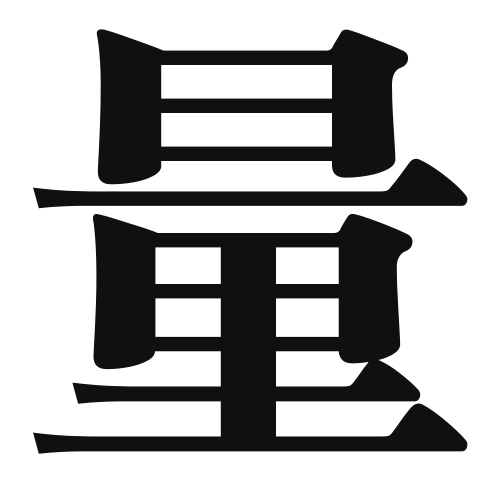1. Overview of Meaning
The kanji “量” (ryou) primarily means “quantity” or “amount.” It is used to express the measurement or extent of something, whether it be physical, abstract, or numerical.
2. Formation and Radicals
Formation of the Kanji: The kanji “量” is a compound character (会意文字) that combines elements to convey its meaning. It consists of the radical “里” (ri), which relates to distance or measurement, and the phonetic component “量” (ryou), which suggests sound.
Radical: The radical of “量” is “里,” which often relates to distance or area, emphasizing the concept of measurement.
3. Examples of Usage
Common Words and Phrases: Some frequently used words that include “量” are:
- 量る (hakaru) – to measure
- 量的 (ryouteki) – quantitative
- 量産 (ryousan) – mass production
Example Sentences in Daily Conversation:
- この箱の中にどれくらいの量が入っていますか? (Kono hako no naka ni dorekurai no ryou ga haitteimasu ka?) – How much quantity is inside this box?
- 水の量を測ってください。 (Mizu no ryou o hakatte kudasai.) – Please measure the amount of water.
4. Synonyms and Antonyms
Similar Kanji: A similar kanji is “数” (suu), which means “number” or “count.” While “量” focuses on the extent or amount, “数” emphasizes the numerical aspect.
Opposite Kanji: An antonym is “無” (mu), which means “none” or “without.” This contrasts with “量,” as it indicates the absence of quantity.
5. Cultural and Historical Background
Relation to Japanese Culture: The concept of “量” is significant in Japanese culture, especially in contexts like cooking, where precise measurements are essential for traditional recipes.
Proverbs and Idioms: One common saying is “量より質” (ryou yori shitsu), which translates to “quality over quantity,” emphasizing the importance of quality rather than just the amount.
